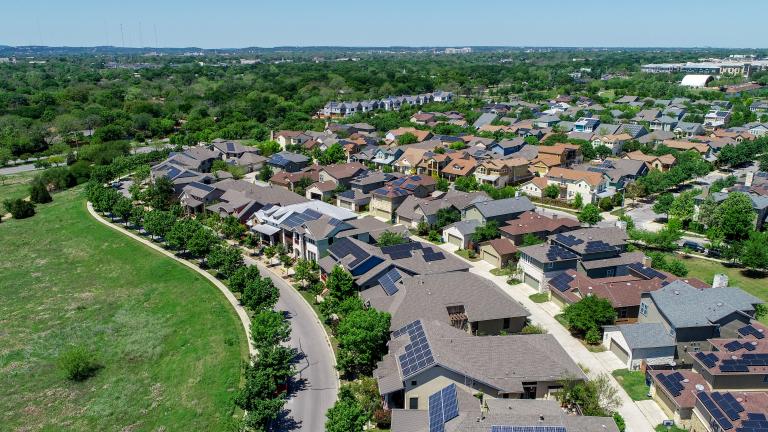
Imagine a neighborhood where the households own a variety of distributed energy resources (DERs) and have different consumption habits. For example, some households own rooftop solar, others own electric vehicles, some have a home storage unit, while other neighbors simply use the house as a vacation home. The diverse customers across the neighborhood will inevitably consume electricity at different times of the day and inject surplus energy at various magnitudes. Assuming that all of the customers belong to the same flat-rate tariff structure, all of the neighbors will be charged the same price regardless of their impact on congestion or contribution to peak loads. While consumers are becoming increasingly motivated to practice sustainable energy consumption habits, it remains challenging when most consumers do not receive the proper price signals.
Under net metering laws, consumers that have surplus energy will reduce their electricity bill and will only be charged for the net load that they consume, after considering the amount of excess energy that they inject back into the grid. However, this does not account for the congestion that the surplus energy contributes to the physical system. On the contrary, customers with rooftop solar could be compensated appropriately for providing surplus energy during peak hours. Although DERs at one household may have a negligible impact on the entire system, the net impact could increase as more residential consumers invest in DERs in the coming decades, which could potentially threaten the quality of service for the entire network.
In addition to the physical impacts, there are a number of economic inefficiencies associated with a flat-rate tariff structure - such as some customers over-consuming or under-consuming during different time periods. While it is clear that there are technical and economic inefficiencies associated with treating every diverse customer identically, it is unclear how the industry could account for hetereogeneity across many end-users. With the current techniques, is not computationally feasible for a centralized system operator to account for a high level of granularity across residential electricity consumers.
An alternative approach is introduced in this paper which accounts for diverse customer preferences and utilizes local communication.
There are several different geometries of how distribution systems could be designed. For residential purposes, the distribution system often has a radial, or tree-like, structure, as displayed in Figure 1, below. While radial structures are not as reliable as a meshed grid geometry, it is of considerably lower cost and typically used in suburban neighborhoods. Meanwhile, meshed grids are typically used in dense, urban centers, and the wires are often underground, which increase the upfront costs.
By taking advantage of the radial structure, the algorithm allows for local information exchange in order to enable computationally feasible energy exchange. The use of local data exchange provides an opportunity for diverse consumer preferences to be cumulatively communicated to a system operator in a bottom-up manner without expecting a single centralized system operator to have knowledge on the entire system. Thus, market operations at the transmission and distribution level could continue with business as usual.
The algorithm is tested on an 46-Bus proof-of-concept example using real data. The power dispatched is compared between the distributed algorithm and the centralized OPF for various levels of DERs. The cost savings are calculated in order to quantify the economic benefits of using a bottom-up, decentralized perspective. The economic analysis implies that the decentralized algorithm would improve welfare for customers with higher demand elasticity, such as customers with flexible load. Overall, the use of the decentralized algorithm to dispatch power for a radial electricity system could lead to cost savings between approximately $35,000 and $400,000 per year as shown in the table below. These cost savings could be attributed to the decentralized algorithm accounting for the cost of distributed energy resources and the demand elasticity of consumers.

Figure 1. Radial Distribution Electric System
In a radial distribution system, power is diverted through serial splits and layers as it is delivered to end-use consumers, resulting in a tree-like structure.

References
Davuluri, Sruthi (2019) "Decentralized Economic Dispatch for Radial Electric Distribution Systems" , MIT CEEPR Working Paper 2019-010.
Further Reading: CEEPR WP 2019-010
About the Author:

Sruthi Davuluri recently earned her M.S. in the Technology and Policy Program at MIT, while working as a Research Assistant for Professor Christopher Knittel. While at CEEPR, Sruthi collaborated with solar startups, worked on a demand response project, and performed research on how electric distribution systems may adapt to heightened DER penetration. Sruthi is now a consultant at an energy consulting firm, E3, in San Francisco, CA.





